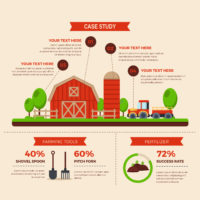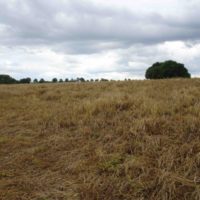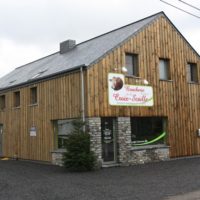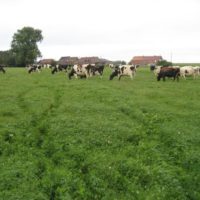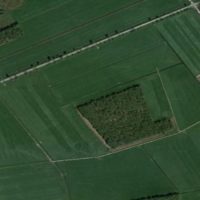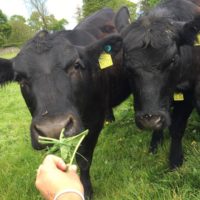Feeding meat breeds with meslin, an excellent way for autonomy and resilience
Practice abstract
Description
The organic farm (currently in conversion) of Catherine Faux is a polyculture farm with suckler cows and ewes regularly grazing together. For 8 years, the strategy has focused on farm autonomy and on short marketing chain. Grassland management is crucial, as is the production of meslin (a mix of straw cereals and legumes sown together, i.e.: wheat, rye, field peas, faba bean). The meslin is often a double-purpose crop (immature forage or grain) that can be harvested after a few months at different stages depending on the climatic conditions of the year and the objectives of the farmer.
The mixed herd allows a more efficient utilisation of grassland and cover crops. Given the advantages of mixed herds, it is recommended to diffuse the information about its advantages.
For grassland management, the recommended approaches concern the use of overseeding to extend the duration of temporary meadows (sod seeding to repair degraded patches in grassland with aggressive varieties such as ryegrass or withe clover). Another innovation is agroforestry to enhance grassland resilience, but also to facilitate rotational grazing as the trees can help the subdivision into paddocks.
The benefits of the on-farm production of meslin are very significant for forage self-sufficiency. Thanks to this crop, the farm is certain to produce enough fodder, either in grains if the climate is favorable, or in silage in case of wet harvest. However, improvements can still be made: to produce the own seeds and to look for other more advantageous mixtures (in order to improve milk or meat yield or to sell a forage surplus on the market).
Abstract also available in:
Dutch | French | German | Italian | Polish | Swedish
Additional information
| Farming system | organic farming |
|---|---|
| Domains of innovation | animal type (breed), forage conservation technique, forage mixture, grazing management system |
| Main types of animal | beef cattle, meat sheep |
| Country | Belgium |
| Product type | Practice abstract |
| Language | English, French |

